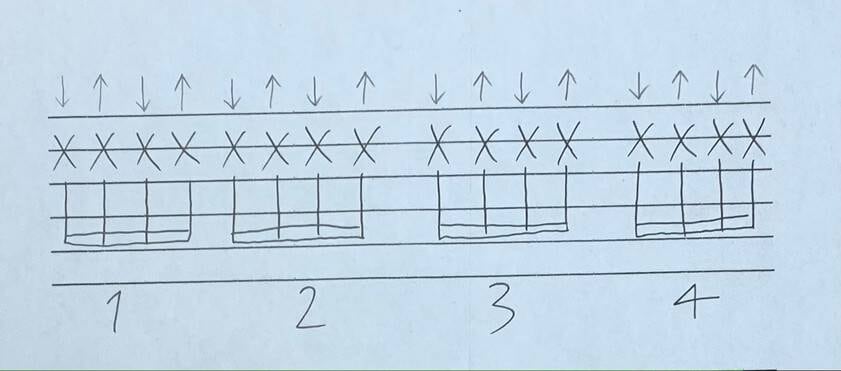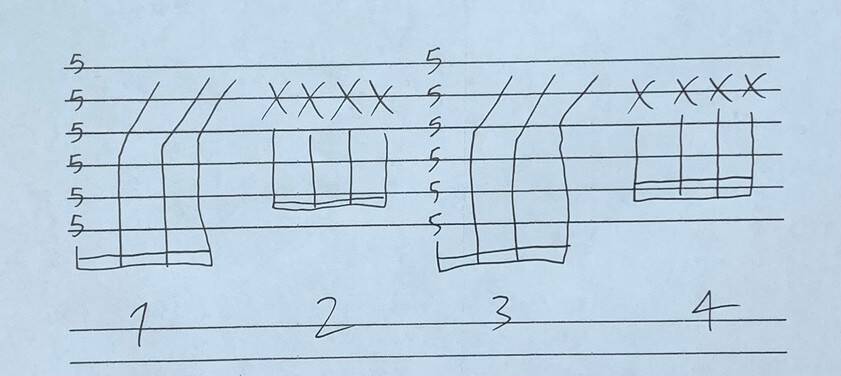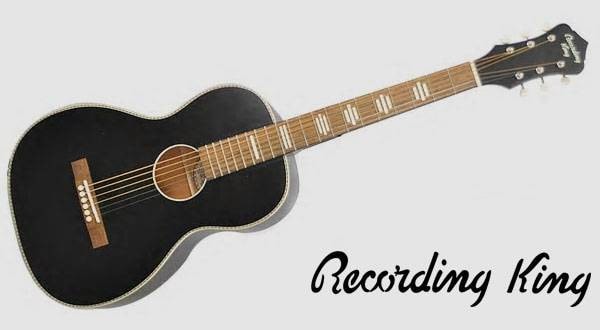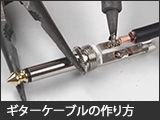Hello, this is Conservario.
Mute strumming is the technique where you strum quickly at a decent tempo, producing a percussive sound.
It might sound like a rough description, but mute strumming is one of those techniques that, once you see and hear it, you’ll instantly recognize it and say, “Ah, that’s it!”
In this guide, I’ll explain the basic practice and important points for mute strumming.
The first step in practicing mute strumming is to focus entirely on your right hand.
Your left hand should lightly touch the strings to mute them.
Lightly touch, not press, or else it will produce sound.
Try playing using the sheet music below while maintaining this muted state.

You’ll notice a lot of X marked in the sheet music.
In fact, there are only X marks.
I don’t recommend including chords or single notes right from the start.
Your left hand should remain muted while your right hand can just strum the strings.
This muted strumming is called ‘brushing’.
The biggest difference between mute strumming and regular strumming is brushing.
Both mute strumming and strumming are techniques for playing chords quickly, but mute strumming frequently involves brushing.
While there are other subtle differences, consider the main distinction to be whether brushing is involved
By continuing to brush like this, you can create a groove, almost like the rhythm of a drum.
Once you can play the sheet music correctly, the sound should resemble this:
Chaka-chaka, chaka-chaka, chaka-chaka, chaka-chaka
Can you play 16 times with downstrokes and upstrokes?
While counting “One, Two, Three, Four,” play four strokes for each count.
Be sure to maintain an even rhythm and volume between downstrokes and upstrokes.
Most people play downstrokes cleanly and smoothly, but they struggle with upstrokes.
If your upstroke sounds more like “jararara...” instead of a crisp “cha!” it means you’re not playing it correctly.
Make sure to keep the same speed and momentum on the upstroke, playing it with force like the downstroke.
To do this, be careful not to let the pick dig too deep into the strings.
If the pick digs too deep, it’ll be hard to play quickly, so try using just the tip of the pick.
Once you’re comfortable with mute strumming, you can add in chords.

Bar all strings from the 6th to the 1st fret on the 5th fret with your index finger.
This is an Am11 chord.
If you’ve never done a barre chord, don’t worry too much about pressing it down perfectly, just try to be aware of it.
It doesn’t matter if the chord sounds imperfect, as long as the brushing and chord changes are audible.
Actually, you can use any chord for this practice, but simple chords aren’t ideal for mute strumming practice.
That’s because switching between the chord and brushing is more difficult.
For example, the famous C chord is known by many.
It’s a chord where you press the 3rd fret on the 5th string, 2nd fret on the 4th string, 0 fret on the 3rd string, and so on.
Switching between the chord and brushing with this one can be tricky, requiring you to lift fingers or even use your unused pinky.
However, a chord like Am11, which you can play with just your index finger barring all strings, is much easier.
You just need to bar all six strings with your index finger, slightly lift it to mute the strings, and brush.
If you follow the sheet music, the sound should be like this:
Jajajaja, chaka-chaka, jajajaja, chaka-chaka
“Ja” is the sound of pressing the chord, and “cha” is the brushing sound.
Quickly press all six strings, lift to mute them, and repeat.
If you can play both of the sheet music examples I’ve introduced, your right and left hand basics will be solid.
Be sure to practice them many times and master them.
■ Conclusion
I’ve explained the basic practice and important points for mute strumming.
When I first started playing guitar, mute strumming seemed like a somewhat minor technique.
Of course, those who liked funk or were aiming to be professional musicians were practicing it, but it was rare for average guitar players to practice it.
However, as times have changed, so has music, and the popular playing style has shifted as well.
The demand for mute strumming has exploded.
Now, you can hear tons of mute strumming in not just J-pop, but also anime songs.
Even in lessons, I’ve seen a huge increase in students asking, “mute strumming!”
Mute strumming is a cool skill to have, and it’s versatile—it doesn’t get in the way of vocals or other instruments, making it a very practical technique.
Both the right and left hand have subtle points and tips to watch out for, but first, just get the feel for it by doing the “chaka-chaka” motion.
Also, there are many masters of mute strumming worldwide, so be sure to check them out and listen to their playing.
It will definitely help expand your playing abilities.
Thank you for reading until the end!
The “sound & person” column is made up of contributions from you.
For details about contributing, click here.











![[Guitar Mastery Guide] Essential Tools for Playing Electric Guitar](/contents/uploads/thumbs/5/2022/2/20220228_5_16889_1.jpg)





 DIY ギターメンテナンス
DIY ギターメンテナンス
 ギターケーブルの作り方
ギターケーブルの作り方
 ギターの種類
ギターの種類
 ギター名人ラボ
ギター名人ラボ
 ギタースタートガイド
ギタースタートガイド
 めちゃラク!ギター講座
めちゃラク!ギター講座















